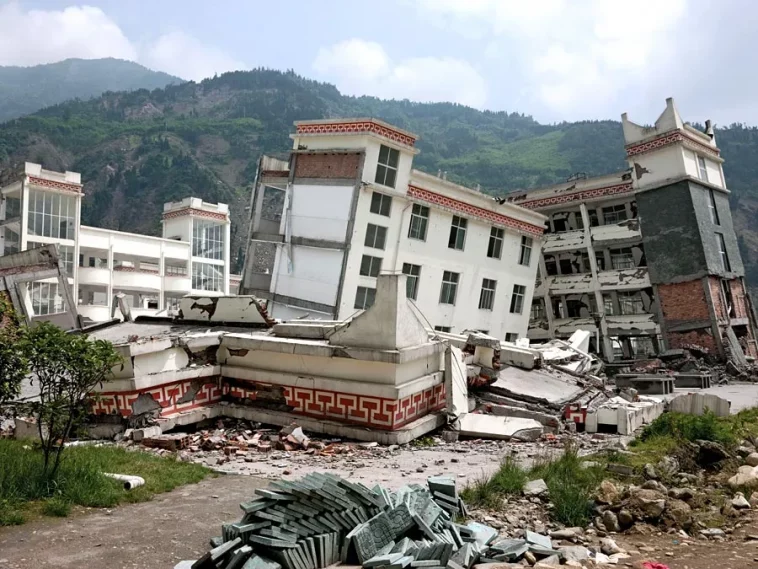A Comprehensive Guide to Protecting Your Home from Earthquake Damage
The effects of an earthquake can be devastating and the damage to homes can be severe. Earthquakes cause the ground to shake, making it difficult to stay in one place and causing structures to collapse or be damaged by the shaking. Fortunately, there are steps that can be taken to protect your home from earthquake damage. From securing any unreinforced walls or foundations to retrofitting your home, these precautions can help to minimize potential damage and help keep your home safe.
1. Invest in Earthquake Insurance
Earthquake insurance covers damages to your home caused by an earthquake and is separate from your general home insurance policy. It covers repairs due to shaking and cracking, as well as other costs such as temporary relocation expenses. Earthquake insurance is available in most states and although the premiums generally aren’t cheap, it provides peace of mind.
2. Inspect and Strengthen Any Unreinforced Foundations
Older homes may have foundations that were constructed without being held up with reinforcing steel. Therefore, they can be more prone to cracking and crumbling during an earthquake. Have such foundations inspected by a professional and reinforce any that are found to be weak. If this isn’t possible, you may want to consider moving to a safer location.
3. Secure Any Unanchored Walls
On newer homes, the wall framing is usually made of thick lumber and it has anchor bolts which secure it to the foundation. However, on many older homes the walls are not securely held down and can be easily knocked down during an earthquake. You can add anchor bolts to any existing walls to secure them.
4. Invest in Seismic Retrofitting
Seismic retrofitting is a way to make your home more resistant to seismic waves during an earthquake. It involves reinforcing your home with structural components such as steel braces, cross beams and wall bracing. These components are designed to channel the energy produced by the earthquake away from the house and help prevent the structure from collapsing.
5. Evaluate All External Structures
Structures such as porches and decks can be particularly vulnerable during an earthquake. Make sure they are secured to the main structure of the home using strong metal ties or bolts. Make sure to inspect any other external structures such as swimming pools, retaining walls and garages as well, and be sure to secure them if needed.
6. Inspect the Roof for Damage
It’s important to inspect the roof of your home for any damage before and after an earthquake. Make sure to check for any loose or missing tiles and any signs of cracking or warping of the roof beams. If you find any damage, make sure to repair it immediately.
7. Pay Attention to Warning Signs
If you live in an earthquake prone area, it’s important to be aware of any warning signs that could indicate an impending earthquake. These can include animals behaving strangely, unusual smells or tastes in the air, strange rumblings in the ground and the appearance of unusual clouds. Paying attention to these warning signs can help you to prepare so that you can take steps to protect your home and your family should an earthquake occur.
8. Have an Emergency Plan in Place
Having an emergency plan in place is essential in case of an earthquake. Consider what steps you will need to take if an earthquake occurs and where you and your family could go to be safe. Practicing your plan regularly will help ensure everyone knows what to do when an earthquake happens.
Investigating the Aftermath of the Most Destructive Earthquakes in Recent History
Earthquakes can have devastating effects, leading to property damage and loss of life. Throughout history, some of the most destructive earthquakes have occurred in recent years. Investigating earthquakes, reviewing the damage they caused and studying the impact they had on the population can help prevent similar disasters in the future.
The 2011 Tohoku Earthquake in Japan
On March 11th, 2011, a magnitude 9.0 earthquake struck Japan’s Tohoku region. One of the strongest in recorded history, it caused major damage to buildings, infrastructure, the environment, and the human population. The resulting tsunami caused death and destruction along the coastlines of Tohoku, resulting in nearly 16,000 deaths and 4,000 missing persons.
The economic costs associated with the disaster were astronomical, reaching an estimated $235 billion in damages, making it one of the costliest natural disasters in history. The effects of the disaster were far reaching, impacting not only the Tohoku region but also the rest of Japan and other parts of the world.
The 2010 Haiti Earthquake
On January 12th, 2010, a 7.0 magnitude earthquake struck Haiti’s capital city of Port-au-Prince. The strong trembling of the earth caused major damage to buildings and infrastructure, as well as casualties among the population. Over 220,000 people were killed and a further 300,000 were injured during the disaster. The loss of life and property was immense, with an estimated $8 billion in damages incurred.
The disaster was devastating for Haiti, as the island nation had been struggling with poverty and political instability even before the earthquake. The immediate effects included damaged and destroyed homes, roads, bridges and other infrastructure, leaving hundreds of thousands homeless. In the aftermath of the earthquake, a significant effort was made to rebuild Haiti and restore it to its pre-disaster state.
Exploring the Increasingly Sophisticated Technology Used to Predict Earthquakes
Although geological data can be used to identify seismic hotspots and patterns, it can be difficult to predict exactly when an earthquake will occur. Scientists have recently developed sophisticated technologies that aim to predict earthquakes before they happen. These technologies have the potential to give society the time it needs to evacuate safely and prepare for the arrival of an earthquake.
Geophysical Instruments
One of the most common methods used to predict earthquakes is geophysical instruments. These instruments measure the ground’s movements and electromagnetic signals that occur during seismic activity, providing scientists with valuable data about an imminent earthquake.
Seismic Network
Earthquakes produce a variety of seismic waves, which are recorded by an extensive network of seismic stations around the world. As seismic waves travel through the ground, they are picked up by seismic stations and the data is relayed back to scientists. This allows scientists to analyze the data and identify any seismic activity that could be indicative of an upcoming earthquake.
Computer Modeling
Computer modeling is another technology used to predict earthquakes. This involves creating simulations that replicate the conditions leading up to an earthquake and then analyzing the results. Scientists can use this data to create predictions about the location, strength and frequency of the earthquake.
Artificial Intelligence
More advanced technologies, such as artificial intelligence (AI) and machine learning, are being used to better understand and predict earthquakes. These techniques involve computers learning from data, offering scientists unprecedented insights into the causes of earthquakes and their potential effects. By “teaching” computers to predict earthquakes, scientists have the potential to save lives by giving us advanced warning of an impending quake.
Conclusion
From geophysical instruments to AI, scientists have developed sophisticated technologies to predict earthquakes. Although no one can be certain when an earthquake will occur, these technologies can give us valuable insights into seismic activity and allow us to better prepare for any potential seismic disasters. Knowing how to protect your home from earthquake damage can also help to minimize any damage that may occur. By arming yourself with knowledge and putting the necessary precautions in place, you can help keep your home safe from intense seismic activity.




